Ball Theater has chosen to represent the French Pavilion at the Venice Architecture Biennale 2023. The curatorial team is composed of Muoto, founded by Gilles Delalex and Yves Moreau, in partnership with Georgi Stanishev and Clémence La Sagna. The pavilion will be open to visitors between May 20 – November 26, 2023.
“Ball Theater” invites us to enjoy a sensory experience, a theater architecture, a scenography of sight and sound that is open to the world and receptive to its concerns, whether ecological or societal. Ball Theater is above all a place of immersion and experimentation, a place where multiple practices interact, inhabited for a week each month by researchers, students, artists, and thinkers, who will turn the Pavilion into a venue for celebration, experimentation, and discussion.
The 18th International Architecture Exhibition (Venice Architecture Biennale 2023), curated by Lesley Lokko, will feature 64 pavilions.
Here is the conversation between the lead curators, Muoto and Georgi Stanishev, of the French Pavilion at the Venice Architecture Biennale 2023, and Serra Utkum Ikiz of PA!
Serra Utkum Ikiz (PA): What inspired the choice to create a “Ball Theater” for the French Pavilion at the Venice Architecture Biennale 2023, and how does this installation reflect the curatorial team’s interests and concerns as architects and designers? In what ways do you hope this project will challenge traditional notions of architecture and performance, and what impact do you hope it will have on the field of architecture and on society more broadly?
Muoto & Georgi Stanishev: The idea was to propose an architecture to be explicitly occupied, as a barricade could be. The figure of the theater represents this possible occupation, as well as reflecting on questions of identities. A theater is always a kind of laboratory for identities. Actresses, actors, dancers, or performers always play a role that is not theirs in real life. So, we thought theatrical architecture would be a good way to raise and experience such questions of identity. Who are we? Why would we want to be someone else? Can architecture become, just like a theater, a means to play roles that are different from those attributed to society?
Serra (PA): How does the spherical shape of the “Ball Theater” impact the visitor experience, and what challenges were faced in creating a performance space within this unique structure? What role does the use of silvered aluminum play in the scenography, and how does it create a sense of immersion and experimentation?
Muoto & Georgi: The spherical structure may seem too big to fit in the room. Visitors may wonder how it came in. Its shape and texture express a certain strangeness. Obviously, it does not belong here. It may have just landed; it may also be ready to take off. This is not a real immersive setting, for the theater takes the shape of a semi-sphere, an object that has been cut in two. It means you can see the interior. One side is full, toward the entrance, while the other side is hollow. One side is strange and obscure; the other is open and inhabited. Visitors may experience this ambivalence, as the sphere is halfway between a stage and a sculpture.
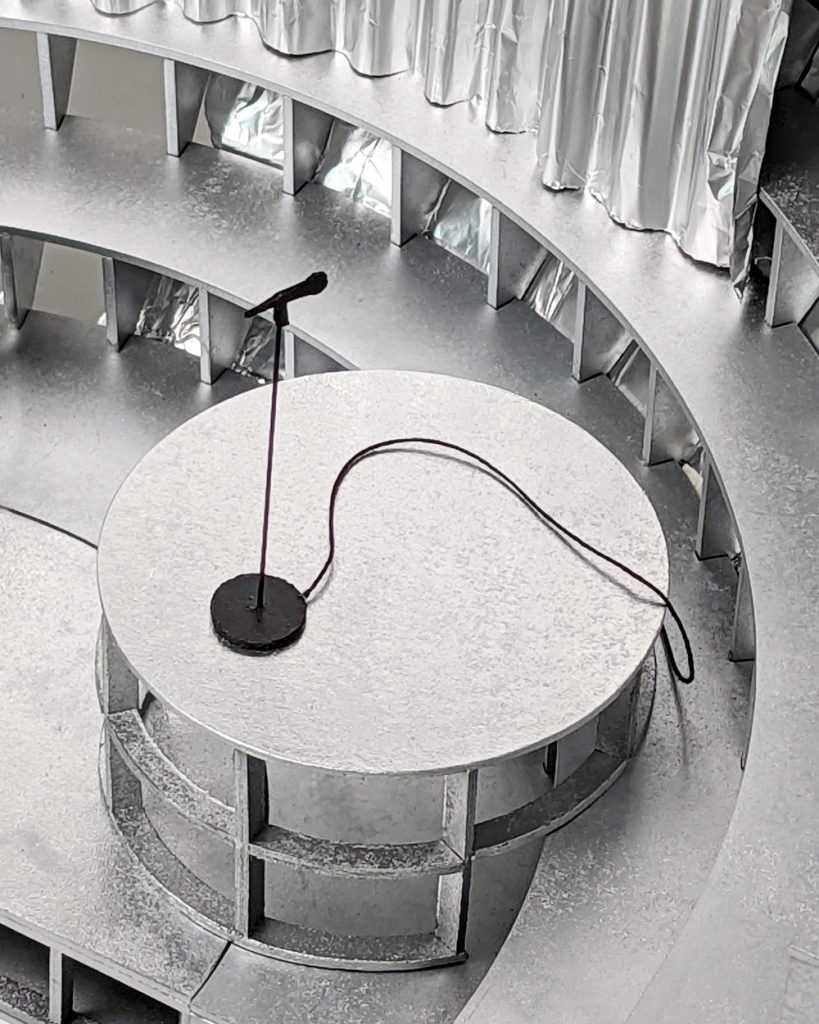
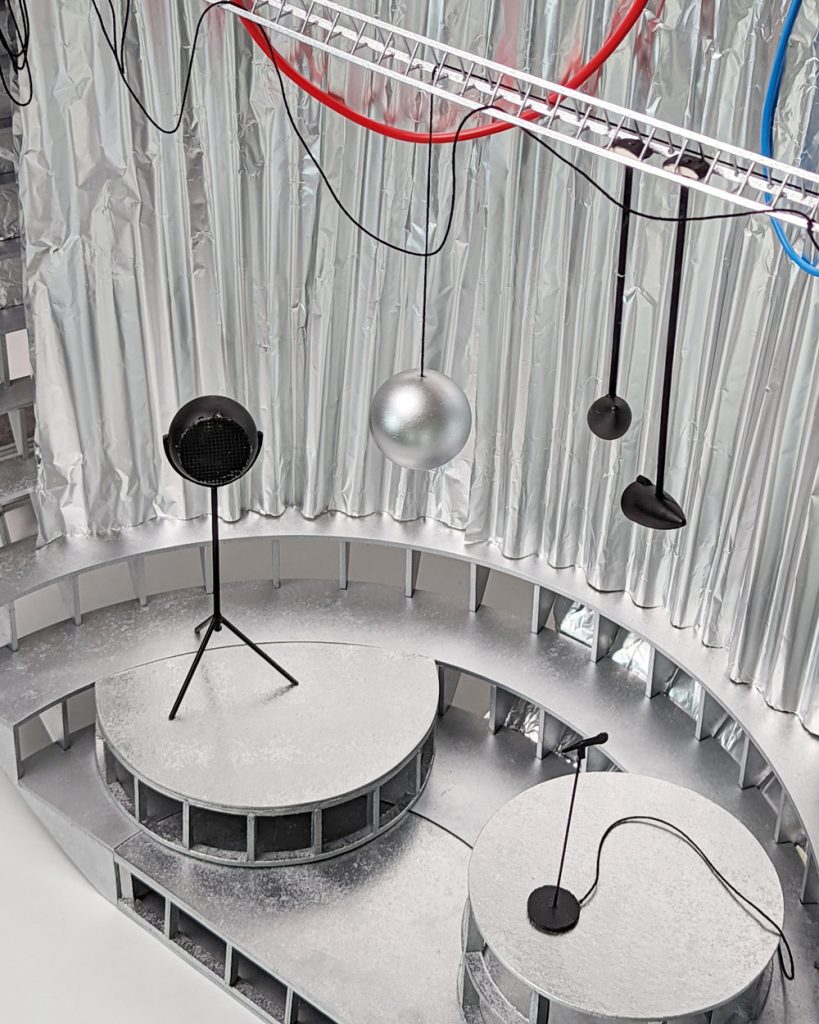
Serra (PA): What role does the history of ball culture play in the transformation of the French Pavilion into a ballroom, and how does this nod to the past connect to contemporary issues such as identity, norms, and gender?
Muoto & Georgi: Harlem’s ball culture is probably the origin of this large movement that tends to question identities today. We thought it was interesting to show that this movement started as a celebration and not simply as a protest. In our opinion, it says something about how we could deal with our feelings of crisis. Instead of complaining and calling for immediate action, we may instead try to imagine new rituals. We may simply enact society as we wish it would be.
Serra (PA): What kind of technology and equipment were used to create the sound and lighting effects within the “Ball Theater,” and how were these integrated into the overall design of the installation? How does the use of recycled and recovered objects in the adjoining rooms reflect the curatorial team’s interest in sustainability and the reconstruction of the future?
Muoto & Georgi: This acoustic environment, made up of voices and whispers, immerses visitors in a form of abstract, non-verbal ur-language that precedes words and stimulates new forms of attention. Noises, songs, voices, murmurs… the sound space evolves over time, shaped by an AI system and an original arrangement of 36 speakers, which creates a “slow listening” ambiance. In a world saturated with visual signs and images, this soundscape suggests that utopia is only possible if one can briefly drop out of the dominant culture, and if one can de-familiarize oneself with language and conventional expression.
We believe that buildings and objects can have several lives. This testifies to our interest in a kind of architecture that can evolve in time and a time itself that is non-linear, as we can imagine a future that may not be simply ahead of us, but elsewhere. This is a different view of sustainability, one that does only claim to protect and keep things as they are, but also to change, to become something that we have not yet envisioned. The installation, made up of recovered and recycled objects, reflects our conflicting feelings of hope and nostalgia, our desire to reconstruct a future with what remains of the past.
We encourage you to stay tuned to ParametricArchitecture for detailed updates on the Venice Architecture Biennale 2023.




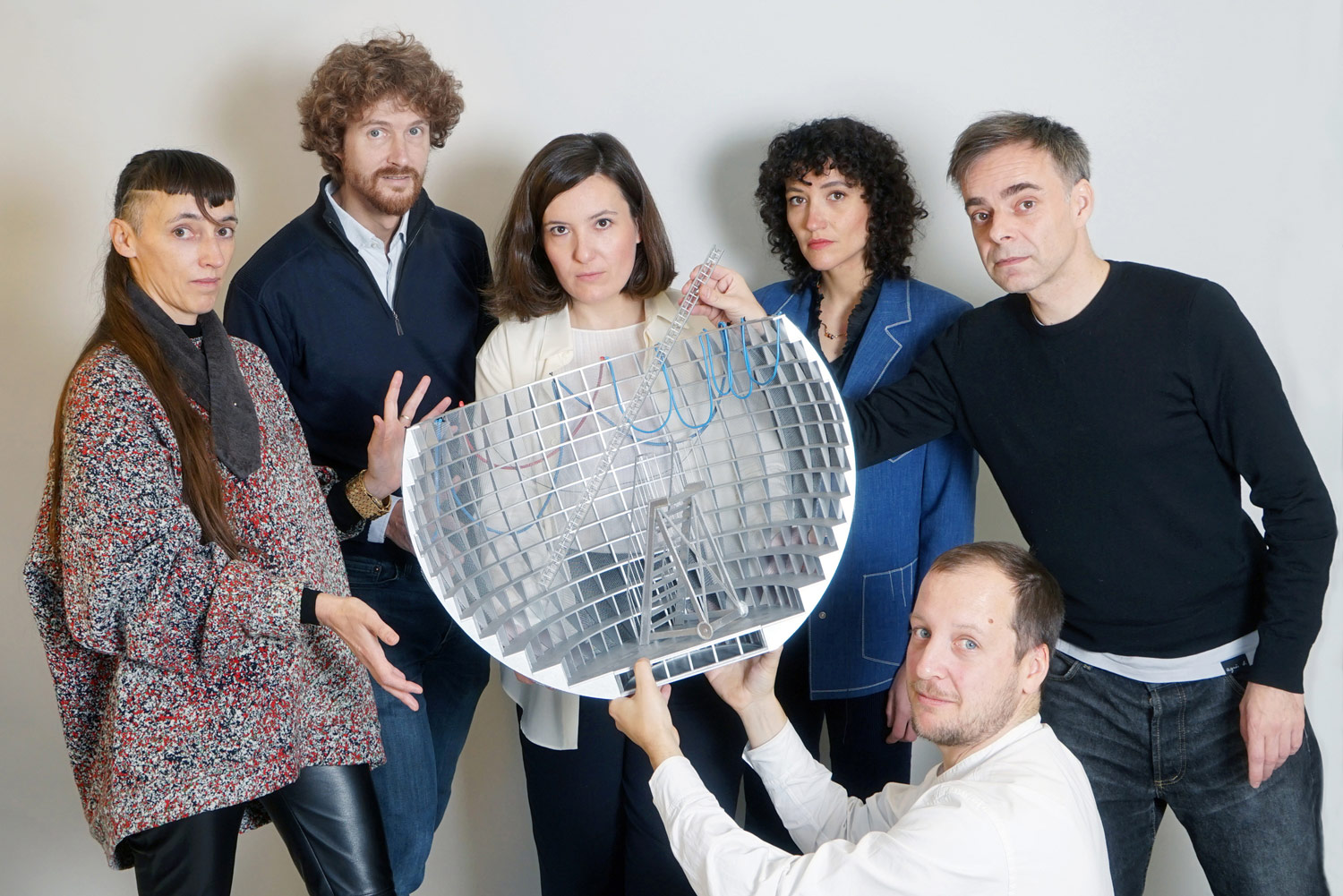
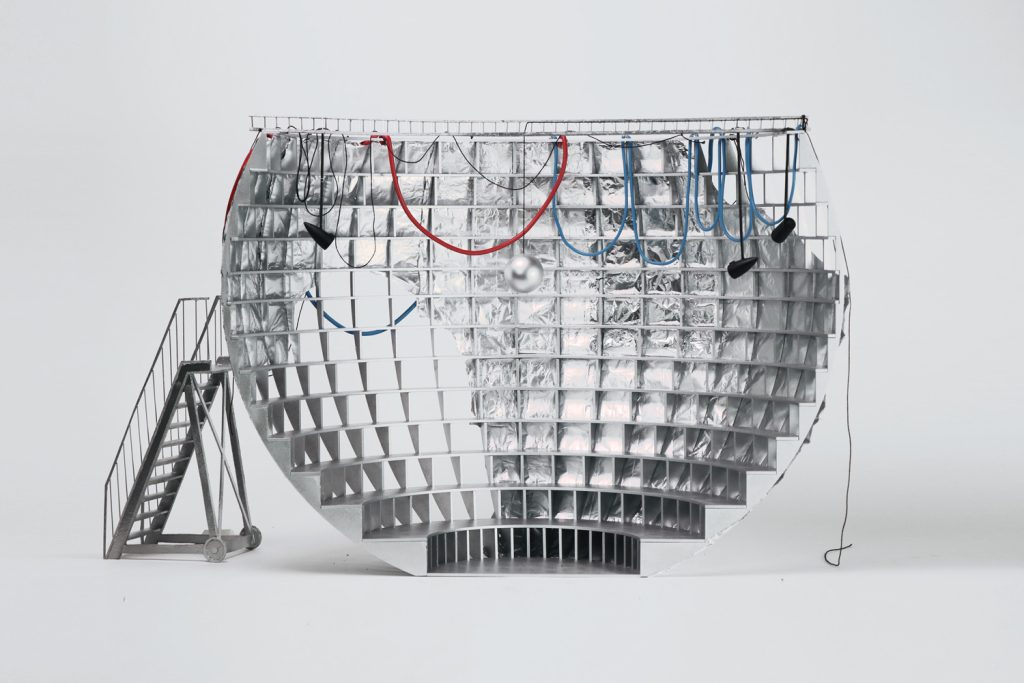
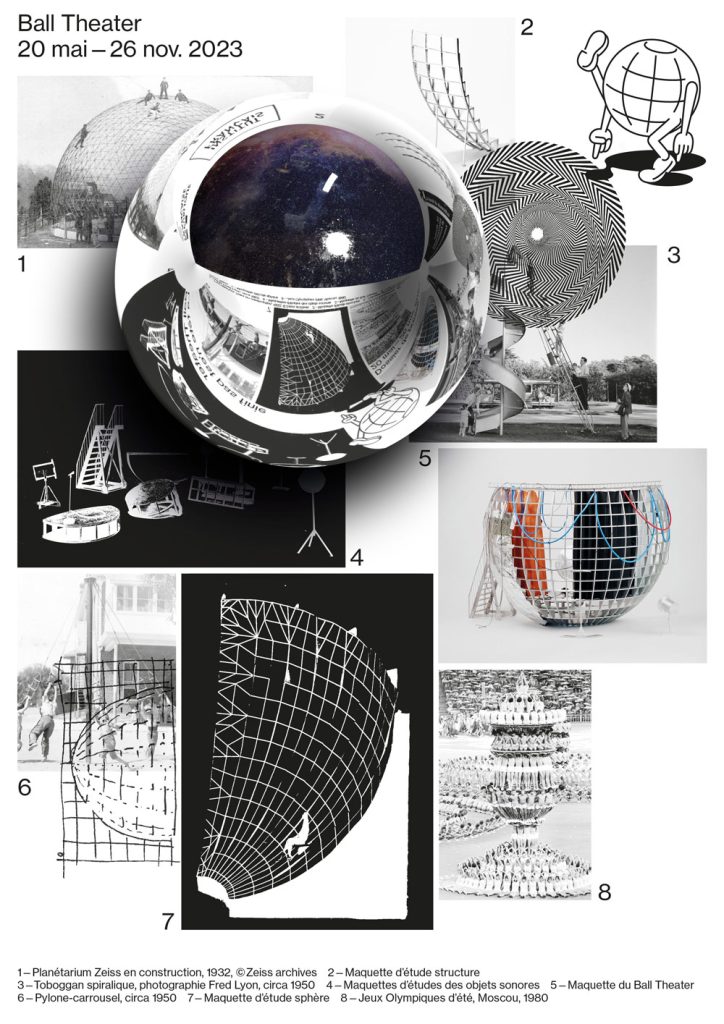














Leave a comment